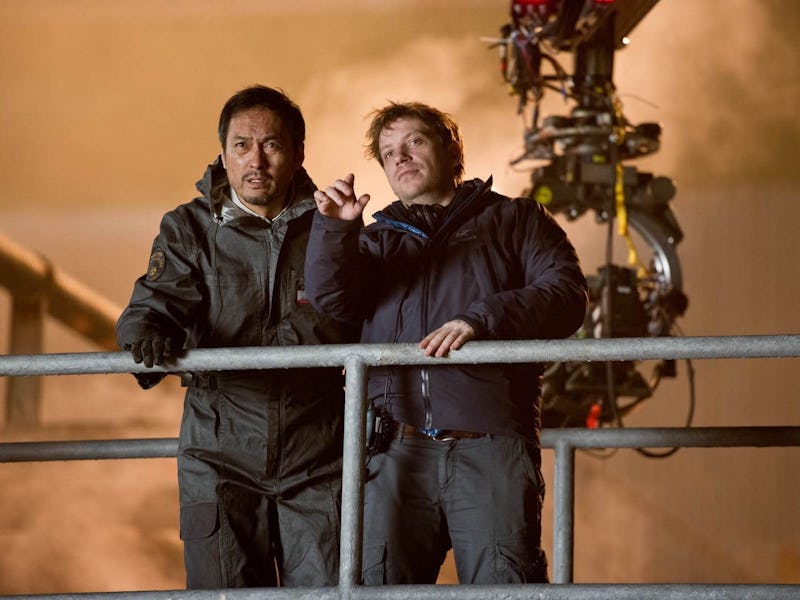2023's Most Exciting Sci-Fi Filmmaker Could Teach Hollywood a Vital Lesson
The director’s assured, confident style has never felt more vital.

Director Gareth Edwards returns with his first movie in seven years this week. The Creator, an ambitious, AI-centric original sci-fi thriller, is Edwards’ long-awaited follow-up to 2016’s Rogue One: A Star Wars Story. That film was famously plagued by behind-the-scenes conflicts and reshoots that, according to numerous accounts, ended up taking a lot of Edwards’ creative control of the project away from him. He has now returned with a sci-fi film that was, for better and worse, seemingly made exactly how he intended.
Produced on a shockingly limited $80 million budget, The Creator is not only Edwards’ attempt to prove himself again as a creative force to be reckoned with in Hollywood but also a rallying cry for more filmmakers and producers to start making large-scale blockbusters that don’t all cost north of $300 million. While it falls short of the mark in several ways, The Creator pulls off both of those things with flying colors.
Gareth Edwards knows how to emphasize the size and scale of certain sci-fi action sequences better than most filmmakers working today.
The Creator is far from a perfect film. In fact, it’s probably Gareth Edwards’ worst movie to date. Its script, performances, and editing are all riddled with issues. That said, it may also be the most visually accomplished film of Edwards’ career so far. The thriller, which was shot at real locations around the world and features visual effects that were all implemented during its post-production phase, is a stunningly beautiful collection of sci-fi images and set pieces.
Edwards’ eye for scale is on particular display throughout The Creator. His on-the-ground, handheld approach to action filmmaking beautifully reinforces the size of the film’s advanced weapons and tanks, and his decision to frame the movie’s central weapon of mass destruction from the perspectives of those who are forced to look up at it only makes it seem all the more imposing. The film’s third-act base ambush even bears many visual similarities to the Scarif attack in Rogue One — proving that Edwards likely played more of a role in that blockbuster’s acclaimed climactic set piece than fans have previously been led to believe.
At no point throughout The Creator’s runtime are the stakes of its central conflict easy to forget, either. Edwards is simply too good at reminding you of the size and power of the forces involved for that to happen. The fact that he manages to do that without relying on the same endless amounts of green screens and Volume footage as so many other filmmakers only further speaks to his visual capabilities. As his micro-budget sci-fi feature debut, Monsters, proved 13 years ago, Edwards knows how to communicate scale and perspective better than almost any other filmmaker of his generation.
Madeleine Yuna Voyles and Gareth Edwards on the set of The Creator.
In terms of mainstream genre filmmakers, Edwards has yet to reach the level of masters like Steven Spielberg, James Cameron, Christopher McQuarrie, and George Miller. His films have all been plagued by easily avoidable script problems, which means he has yet to accomplish the same perfect marriage between written and visual storytelling as those other directors have numerous times throughout their careers. In an era when so many blockbuster filmmakers seem incapable of making the most of the resources at their disposal, though, Edwards is a rare visual artist.
His previous films — namely, 2014’s Godzilla — have aged better than most of the superhero and franchise blockbusters that have come after them. That’s a testament to Edwards’ skill and the enduring quality of his style. His terrible opinions about AI notwithstanding, Edwards makes blockbusters that actually look and feel massive, and that’s something that’s becoming increasingly hard to come by these days. His ability to do so even with considerably smaller budgets than many of his contemporaries only reinforces how much Hollywood at large could stand to learn from him.
The Creator is now playing in theaters.
This article was originally published on